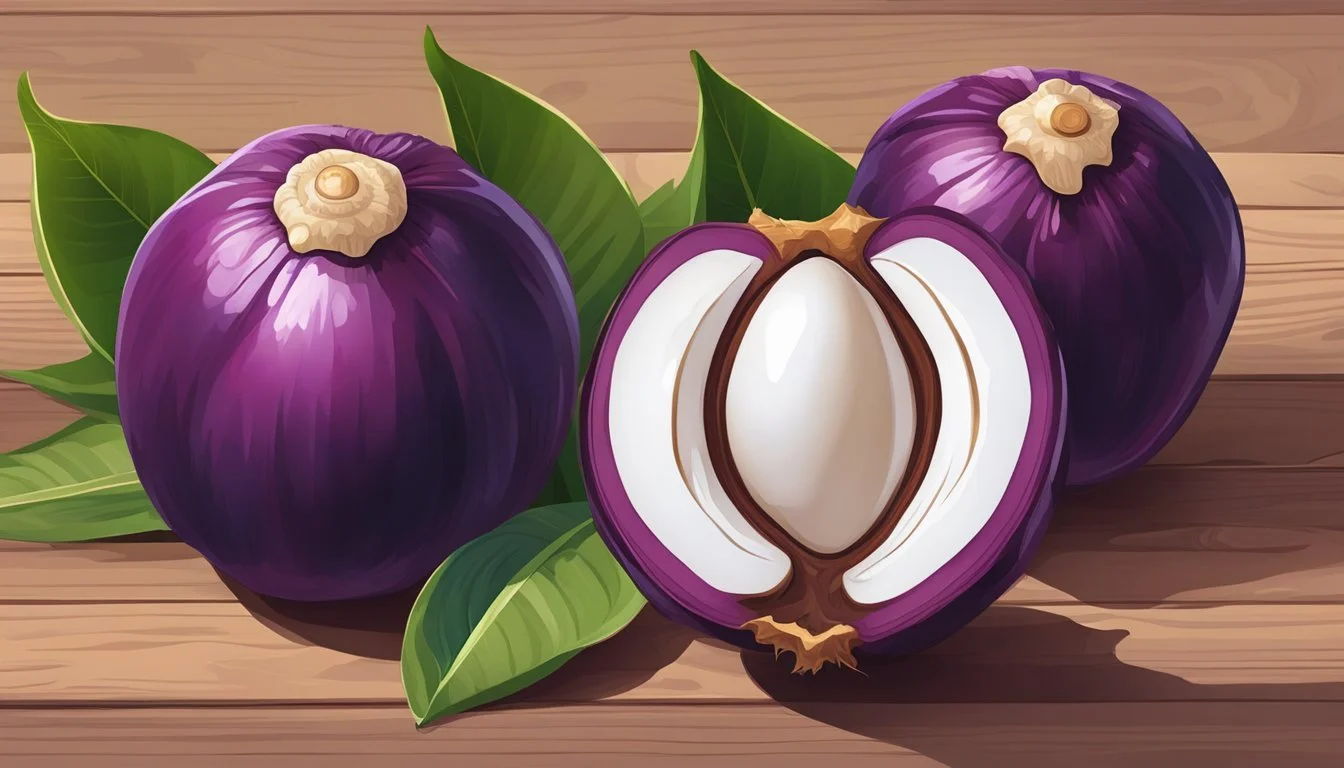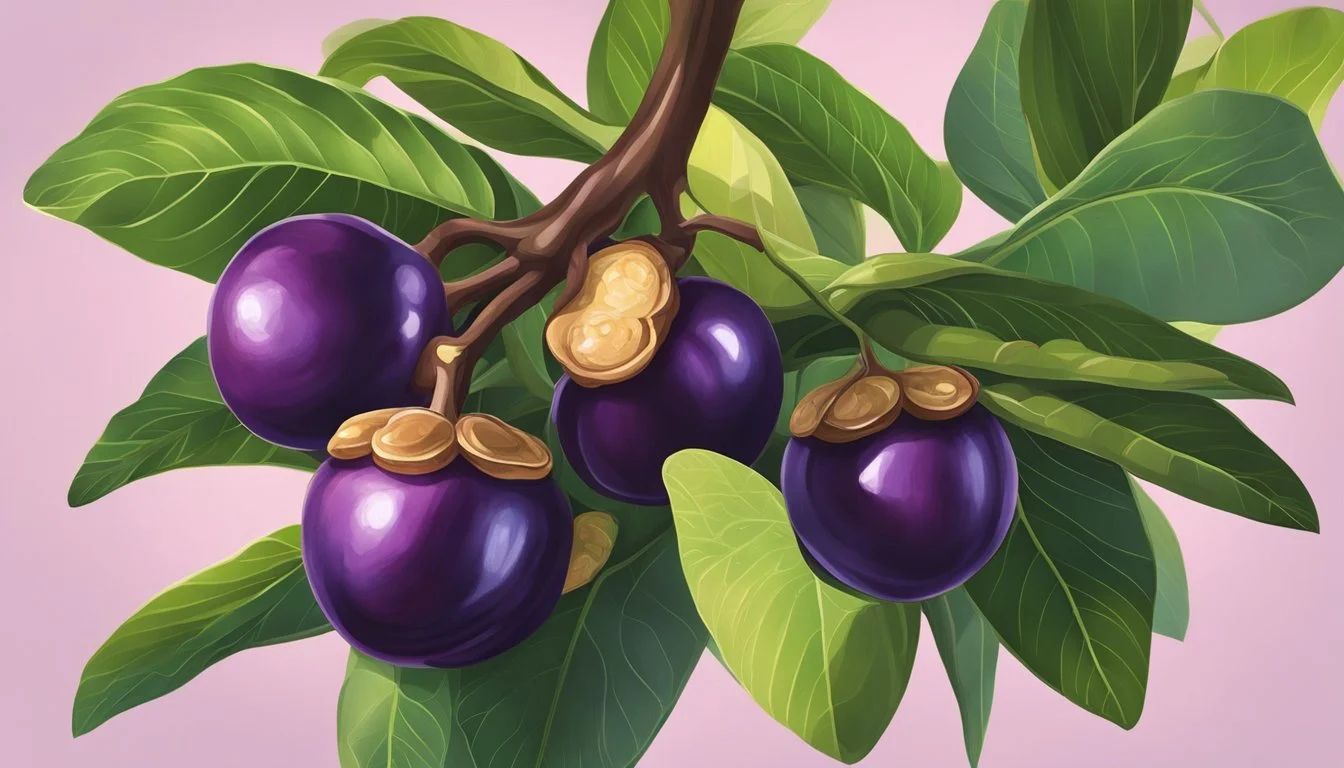How to Tell if a Mangosteen is Ripe
Selecting the Perfect Fruit with Expert Tips
Mangosteen, often revered as the "queen of fruits," boasts of a delicate balance of sweet and tangy flavors encased within its vibrant purple rind. Identifying the perfect time to enjoy this exotic fruit can greatly enhance the experience, as the taste of a ripe mangosteen is unparalleled. Knowing how to select a ripe mangosteen is essential for both fruit connoisseurs and first-time experimenters alike.
While appearances may initially draw the eye, the true test lies in assessing the tactile and visual cues the fruit offers. A ripe mangosteen is more than just a treat for the taste buds; it is a vital source of nutrients and offers a range of culinary uses. Selecting the ideal fruit involves examining its weight, firmness, and color. In addition, understanding proper storage and preparation can preserve the fruit's cherished qualities from market to plate.
Key Takeaways
Ripe mangosteen can be identified by its weight, firmness, and glossy appearance.
Proper selection and storage are fundamental for maintaining the fruit's flavor and nutritional value.
Mangosteen offers versatile culinary applications and can be a nutritious addition to one's diet.
Understanding Mangosteen
Mangosteen, often dubbed the "queen of fruits," is a tropical fruit prized for its unique flavor and purported health benefits. This section provides an insight into the fruit's origins and the characteristics of the mangosteen tree.
Origins and Habitat
Mangosteen is native to Southeast Asia, believed to have originated in the Sunda Islands and the Moluccas. The fruit thrives in a tropical climate, requiring high humidity and well-distributed rainfall throughout the year. It doesn't tolerate prolonged dry periods or frost, limiting its cultivation to tropical regions close to the equator.
Mangosteen Tree Characteristics
The mangosteen tree is an evergreen tree which typically reaches 6-25 meters in height. Its characteristics include:
Leaves: Dark green, glossy, and opposite; they are oval-shaped and leather-like in texture.
Flowers: They develop as either male or female on separate trees with the female flowers eventually developing into the fruit.
Fruit: The mangosteen fruit has a thick, purple rind when ripe, containing white, juicy segments inside. The number of segments inside a mangosteen is usually equal to the number of petals on the bottom of its shell.
Mangosteen trees can take up to 10 years to begin producing fruit, but they are long-lived, with some specimens known to continue fruiting for over a century. The fruit itself is highly esteemed in culinary circles, heralding a delicate balance of sweet and tart flavors.
Characteristics of Ripe Mangosteen
Selecting a ripe mangosteen involves understanding its distinct characteristics. A ripe mangosteen combines the right color, texture, weight, and scent to signify its readiness for consumption.
Color and Texture
A ripe mangosteen will exhibit a deep purple hue, indicating peak ripeness. The skin should be smooth without blemishes. Brown spots or an overly soft texture may indicate over-ripeness or spoilage.
Color: Deep purple
Texture: Smooth, no blemishes
Size and Weight
An ideal ripe mangosteen will feel heavy for its size, suggesting a juicy interior. It doesn't have to be large, but a certain heft is a good sign of ripeness.
Size: Not necessarily large
Weight: Heavy for its size
Aroma and Feel
When gently squeezed, the skin of a ripe mangosteen will be firm yet give slightly, particularly around the middle. A ripe mangosteen should also be fragrant, emitting a subtle, sweet aroma.
Aroma: Subtly sweet and fragrant
Feel: Firm with slight give around the equator
Harvesting and Post-Harvest Tips
Selecting the perfect moment to harvest mangosteens ensures that they are picked at peak ripeness, offering the best flavor and texture. Proper post-harvest handling then maintains their quality until they reach the consumer.
Picking the Right Time to Harvest
Mangosteens should be harvested when they achieve a purplish-red color and the rind exhibits a subtle gloss. They should feel slightly heavy for their size, indicating juiciness. The stem should still appear fresh and green. Gently press the fruit around its equator; a ripe mangosteen will yield slightly to pressure. If the fruit's rind is firm with no give, it needs more time on the tree.
Post-Harvest Handling
Once harvested, mangosteens should be stored at room temperature to retain their delicate flavor and prevent them from becoming too soft. Any stems left on the fruit should be kept intact to avoid puncturing the rind and introducing pathogens. Storing them correctly helps in preserving their freshness until they are ready to be enjoyed. Mangosteens are generally not refrigerated as cold temperatures can diminish their taste and lead to a loss of the delicate, tropical nuances they are known for.
Selecting Mangosteen at the Store
When choosing mangosteens, it is crucial to assess for both freshness and ripeness to ensure a quality purchase. This selection process involves examining the fruit's appearance and responding to its texture when gently squeezed.
Inspecting for Freshness
One should seek out mangosteens with a glossy and deep purple color which often indicates proper ripeness and health. The presence of a fresh-looking, green calyx atop is also a sign of a recently harvested fruit. In terms of size and weight, a heavier mangosteen relative to its size typically suggests a juicy interior, and should be considered when selecting.
Feeling for Ripeness
To test ripeness, the outer shell of the fruit should feel firm all over. A slight softness around the mangosteen's "equator" can be a positive indicator; when applying mild pressure with the thumb, one should detect a gentle give. An overly hard shell indicates under-ripeness, while too much softness may suggest over-ripeness or the beginnings of decay.
Storing and Preparing Your Mangosteen
Selecting a ripe mangosteen is only the first step; how one stores and prepares this exotic fruit determines its taste and longevity. Proper techniques ensure that the mangosteen's unique flavor and texture are preserved from the market to the table.
Proper Storage Techniques
For those who wish to store ripe mangosteen, it is imperative to keep them at a temperature around 10°C (50°F), like in a cold pantry, to preserve their flavor and texture. Storage at room temperature is feasible but should only be for a short period, as this does not provide long-term preservation.
Do Not Refrigerate: Refrigeration can lead to a loss of flavor and may damage the delicate juice sacs inside the fruit.
Check for Ripeness: A ripe mangosteen has a deep purple rind and gives slightly under pressure.
Avoid Bruising: Handle with care to prevent any damage to the outer rind and the inner sacs.
Cutting and Serving
Preparing a mangosteen for consumption involves a careful cutting technique, as improper handling can damage the fruit's juicy segments.
Tools Required: A serrated knife works best to pierce the mangosteen's rind.
Cutting Method:
Hold the fruit on its side.
Make a shallow incision around the circumference, approximately 1/4 to 1/3 inch deep.
Gently twist the top to reveal the soft, white interior.
Serving Suggestion: The mangosteen is typically divided into segments and can be enjoyed fresh, without any additional seasoning to alter its natural sweetness.
By adhering to these storage and preparation guidelines, one can enjoy the full sensory experience that ripe mangosteens offer.
Health Benefits and Nutritional Value
Before delving into how to select the perfect mangosteen, it is crucial to understand the health benefits and the nutritional value that this fruit encompasses. Mangosteen is not only a delicious tropical fruit but also a storehouse of essential vitamins, minerals, and potent antioxidants.
Vitamins and Minerals Content
Mangosteen is enriched with a good range of nutrients. It contains vitamin C, essential for immune function and skin health, and B-vitamins such as vitamin B6, thiamin, and niacin, which are crucial for energy metabolism and neurological health. The fruit is a source of fiber for digestive health and contains notable amounts of manganese and magnesium, minerals important for bone health and enzymatic reactions.
Nutrient: Vitamin C
Benefits: Boosts immunity, supports skin
Nutrient: B-Vitamins
Benefits: Aids metabolism, supports nerve function
Nutrient: Fiber
Benefits: Enhances digestive health
Nutrient: Manganese
Benefits: Strengthens bones, aids enzyme functions
Nutrient: Magnesium
Benefits: Regulates muscle and nerve functions
Antioxidant Properties
Mangosteen is particularly esteemed for its antioxidant capacity, attributed to a group of compounds known as xanthones found in its white pulp. These bioactive compounds are recognized for their anti-inflammatory and anti-carcinogenic properties. Antioxidants protect the body from cellular damage caused by free radicals, thus potentially reducing the risk of chronic diseases. With a relatively low calorie count, this makes mangosteen both nourishing and aligned with health-conscious diets.
Xanthones: Display anti-inflammatory and anti-carcinogenic effects
Antioxidants: Combat oxidative stress
Low Calories: Supports weight management strategies
Consuming mangosteen can contribute positively to overall health by providing essential nutrients and leveraging its antioxidant power.
Culinary Uses of Mangosteen
Mangosteen, with its unique taste and flavor, can enhance a variety of culinary preparations. Recognized for its juicy segments and ripe sweetness with a hint of tartness, the fruit is versatile in the kitchen.
Incorporating into Recipes
Mangosteen's segments can be a delightful addition to fruit salads, offering a balance of sweet and tart flavors that can complement other fruits. It can also be puréed to create a base for a refreshing mangosteen sorbet, which captures the essence of the ripe fruit in a frozen dessert. For bolder experimentation, chefs can fold mangosteen segments into pastry fillings or chutneys, leveraging its exotic flavor to elevate the dish.
Beverage Ideas
The ripe juices of mangosteen lend themselves well to both smoothies and juices, where the fruit's flavor can truly shine. For smoothies, blending the segments with other tropical fruits can create a drink that's both nutritious and full of nuanced tastes. Alternatively, mangosteen juice can be served simply on its own or as part of a sophisticated cocktail, providing a confident hit of sweet-tart flavor that is both refreshing and invigorating.
Growing Your Own Mangosteen Tree
Mangosteen trees, known for their delicious fruit and beautiful appearance, make a rewarding addition to a gardener's hobby. They require specific conditions and meticulous care to thrive and produce high yields.
Garden Planting and Care
When planting a mangosteen tree in the garden, one must ensure they choose a location that accommodates the full size of a mature mangosteen tree, potentially reaching up to 25 meters in height with a wide canopy.
Soil Requirements:
Rich, well-drained soil
Enrich with organic matter
Site Preparation:
Space trees 35-40 feet apart
Plant in large pits enriched with compost or organic matter
Ensure the location receives ample sunlight
Consistent watering is crucial for mangosteen trees, especially during their growth phase, while ensuring adequate drainage to prevent root rot. They typically take 8 to 10 years to bear fruit, making patience a critical factor.
Protection from Pests and Diseases
Mangosteen trees can be susceptible to various pests and diseases. It is essential to practice proactive monitoring and management to protect the trees and ensure healthy growth.
Common Pests:
Fruit flies
Scale insects
Mealybugs
Disease Prevention:
Fungal diseases are common; apply fungicides as preventative measures.
Ensure proper air circulation to prevent the onset of mold and mildew.
Utilizing organic pesticides and regular pruning can greatly assist in maintaining the health of the tree, thereby protecting it from common threats. Gardeners are encouraged to consult with local agricultural experts for the most effective pest and disease management practices in their specific region.



